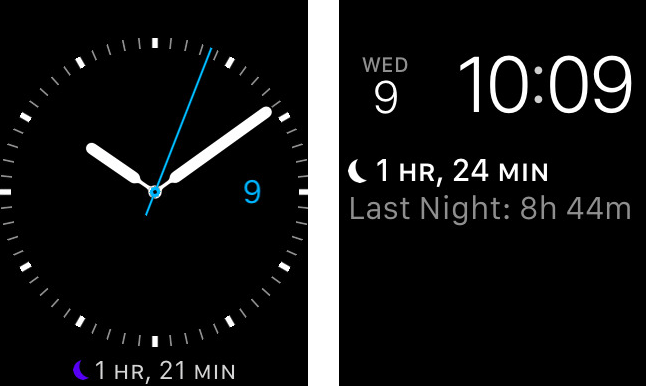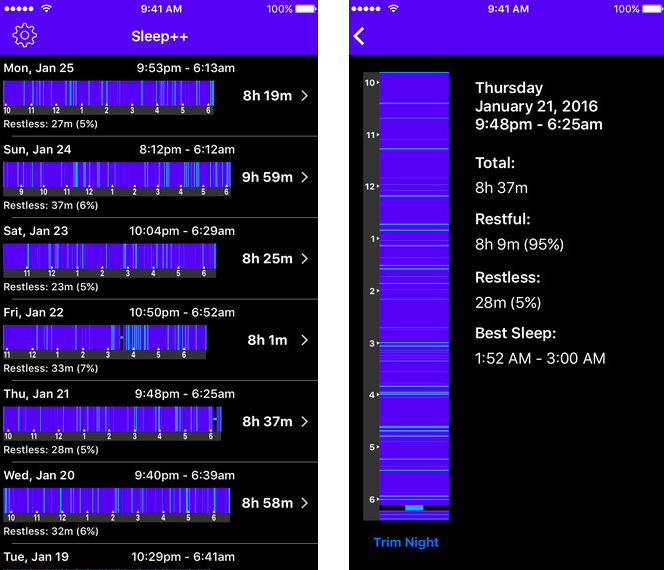 A good night’s sleep is essential to your health and well-being, which is why you shouldn’t skimp on this aspect of your life. Getting the proper rest, though, isn’t just about putting the hours in, the quality of your sleep is equally important. There are a variety of trackers to help you monitor both how long and how well you sleep, but unfortunately, the Apple Watch doesn’t support sleep tracking natively. If you want to track your sleep using your Watch, you need to turn to third-party apps like Sleep++.
A good night’s sleep is essential to your health and well-being, which is why you shouldn’t skimp on this aspect of your life. Getting the proper rest, though, isn’t just about putting the hours in, the quality of your sleep is equally important. There are a variety of trackers to help you monitor both how long and how well you sleep, but unfortunately, the Apple Watch doesn’t support sleep tracking natively. If you want to track your sleep using your Watch, you need to turn to third-party apps like Sleep++.
Sleep++ uses the motion sensor in your Apple Watch to track your movement while you sleep. To get started, you’ll need to install the app on both your iPhone and your Watch. Once you are ready to go to sleep, just open the app on your Watch and tap on the start button to begin tracking. As you sleep, the Watch app runs in the background, monitoring your movement and correlating it with the quality of sleep. The more you move, the more restless is your sleep. When you wake up the next morning, you can quickly stop the sleep monitoring by touching “Stop Tracking.” The app also includes a complication that allows you to launch the app and track your sleep directly from the Watch face.
Read: How to change and customize the watch face on your Apple Watch

Each time you record a sleep session, the data is sent to your phone and shared with Apple’s Healthkit app. Each sleep session is stored in the iPhone app, allowing you to review it as needed. You can adjust the length of sleep time using the new “trim” feature. You also can view details on the quality of sleep each night, which includes the time you spent in restful sleep, the time spent in restless sleep and the best sleep time.
Sleep++ provides a helpful overview of your sleep, but it is not a diagnostic tool to detect sleeping disorders such as sleep apnea. These more severe conditions are best analyzed by professional technicians in a sleep center. Sleep++, however, can be useful for a healthy person who wants to improve their nightly rest. It provides insight into your sleep patterns so you can identify your problem areas ( staying up too late, getting up to get a drink, etc.) and eliminate them.

The biggest drawback to the Sleep++ app is the requirement that you must wear the Apple Watch overnight, which is the time you usually charge your Watch. If you want the Watch to track your sleep all night, you need to plan ahead and charge the Watch before you call it a night. Alternatively, you could put the Apple Watch in Airplane mode before sleeping to ensure the battery doesn’t drain a lot while sleeping (Thanks Darmac for the tip!).
Sleep++ also is not as convenient as other trackers like the Fitbit or Jawbone models, which detect when you go to sleep automatically. This automatic tracking is extremely convenient for people who don’t want to be bothered with turning on an app before bed or fall asleep quickly and forget to turn on tracking. If you forget to turn on tracking with Sleep++, it won’t record the sleep data, and you miss a night of recording.
As mentioned earlier, Sleep++ (iTunes link) supports both the iPhone and Apple Watch and is available for free from the App Store.